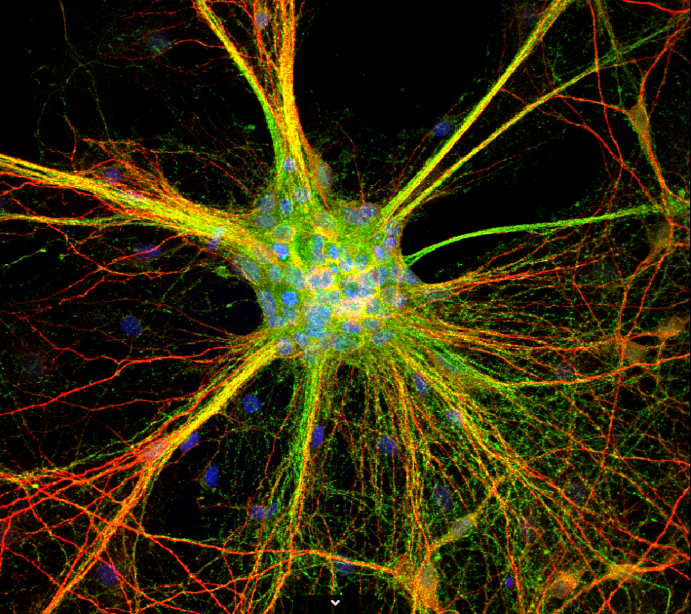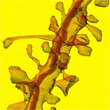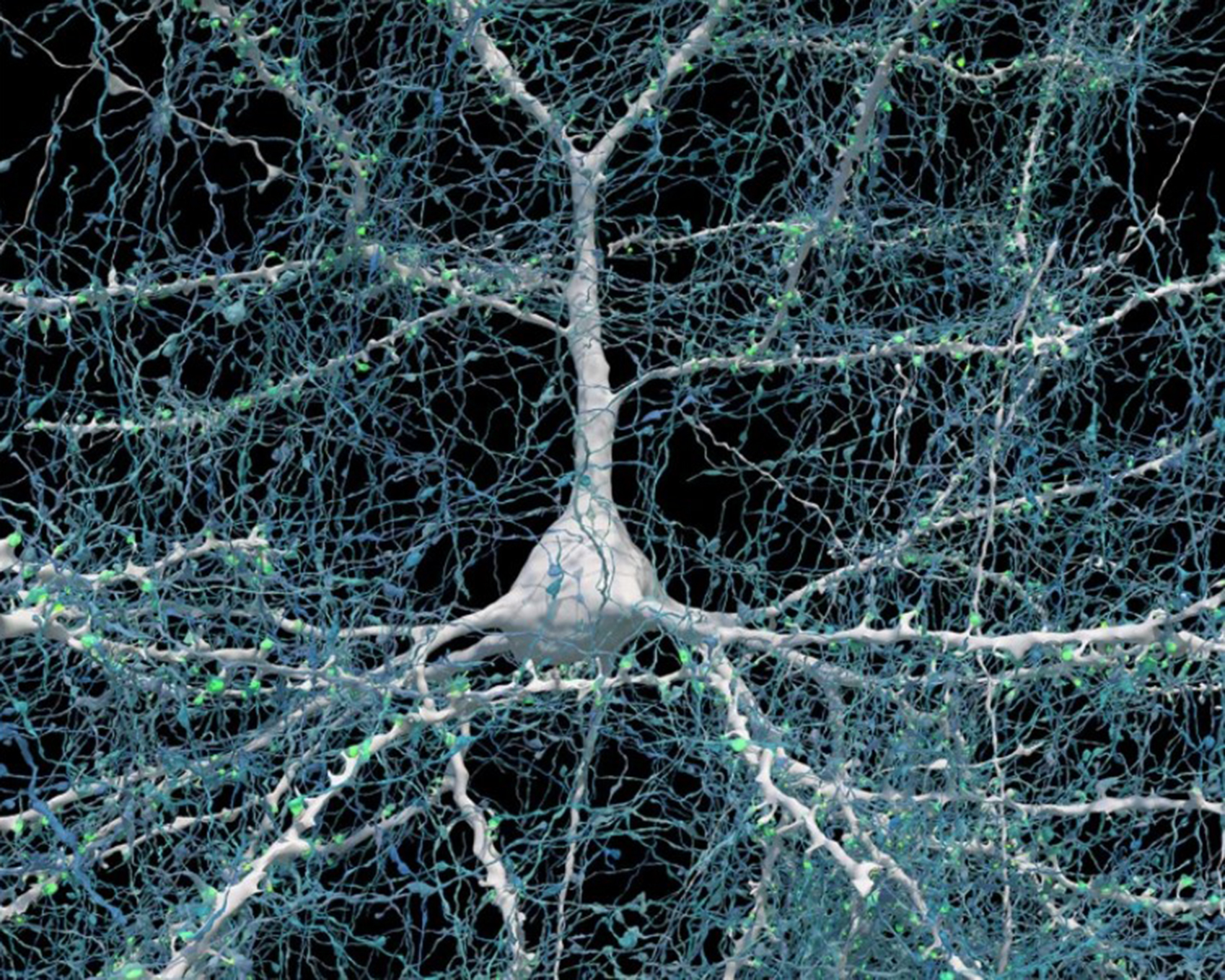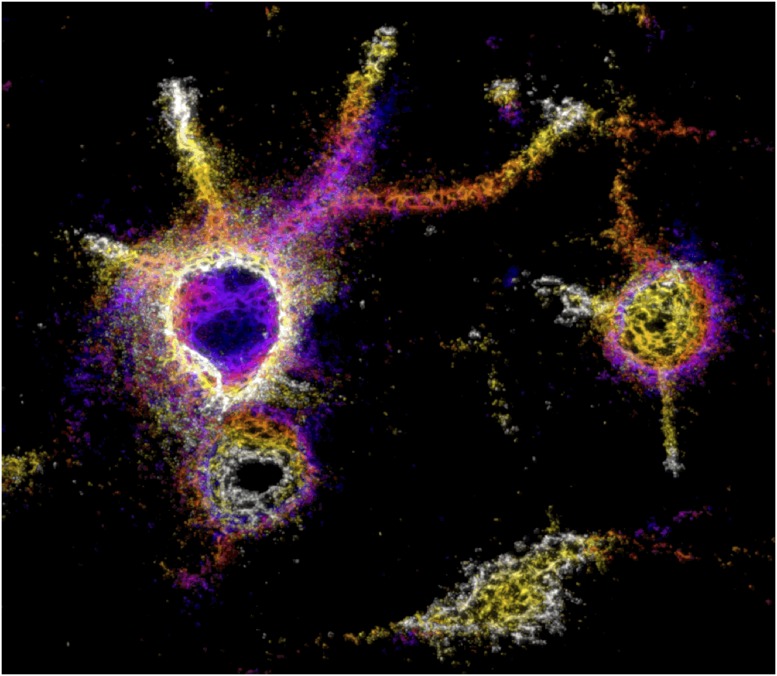Tuesday, 17 September 2024
Spectacular reconstructions of the neurons of the human cortex
The problem with scientific research is that it never stops. Recently, my friend Jean-Pierre, who keeps a close eye on new articles in major neuroscientific journals, let me know about a major paper just published in Science, about how electron microscopy is now being used to reconstruct neurons of the human cortex with unequalled precision. And since this research had been done by Jeff Lichtman’s team at Harvard, and I had already written a post about it in this blog back in 2014 , I figured that I had better write another post about it now, because the images of neurons that this team has succeeded in producing recently are truly spectacular. For example, the image above represents one neuron with 5600 axons (blue) making synaptic connections (green)). (more…)
From the Simple to the Complex | Comments Closed
Monday, 19 August 2024
Discovery of the “jailer” in our neurons
Today I’d like to say a few words about a phenomenon that is related to neuronal plasticity and that I’d never heard of before. I learned about it in a book entitled Seeing the Mind: Spectacular Images from Neuroscience, and What They Reveal about Our Neuronal Selves, by French cognitive psychologist Stanislas Dehaene. Actually, I read the original French edition, published in 2021, but I don’t have access to the English edition, published in 2023, so the following excerpt is my own translation:
As we age, certain neurons, and especially the large inhibitory neurons that control the activity of their surroundings, become wrapped in a perineuronal net,a rigid lattice that holds them still. This aggregate of proteins and sugar chains, which has some of the same ingredients as cartilage, prevents the nerve cells from changing. Hence they cannot form new connections or even alter existing ones; emprisoned in this net, the neuron loses its plasticity.
From the Simple to the Complex | Comments Closed
Monday, 22 August 2022
Neurons as Works of Art
 If you visit the website that I’m going to tell you about today, you’re likely to kill a lot of time there, as I just did. But if visiting a museum to enjoy beautiful art isn’t really killing time, then neither is visiting NeuroArt® —an online gallery of gorgeous images of neurons and the brain, produced with dyes, tracers and a variety of other technical methods. (more…)
If you visit the website that I’m going to tell you about today, you’re likely to kill a lot of time there, as I just did. But if visiting a museum to enjoy beautiful art isn’t really killing time, then neither is visiting NeuroArt® —an online gallery of gorgeous images of neurons and the brain, produced with dyes, tracers and a variety of other technical methods. (more…)
From the Simple to the Complex | Comments Closed
Tuesday, 27 May 2014
The Variety and Structural Complexity of Neurons
 The purpose of most of the posts in this blog is to summarize recent studies in the cognitive sciences and attempt to make them more accessible—in particular by providing links to selected pages on this website. But the purpose of some of the other posts is simply to draw attention to existing resources on various aspects of neuroscience. Today’s post falls in the latter category. It deals with the neuron and the work by Kristen Harris and her colleagues to reveal it in all its complexity (see the first two links below). (more…)
The purpose of most of the posts in this blog is to summarize recent studies in the cognitive sciences and attempt to make them more accessible—in particular by providing links to selected pages on this website. But the purpose of some of the other posts is simply to draw attention to existing resources on various aspects of neuroscience. Today’s post falls in the latter category. It deals with the neuron and the work by Kristen Harris and her colleagues to reveal it in all its complexity (see the first two links below). (more…)
From the Simple to the Complex | Comments Closed
Tuesday, 11 June 2013
Shedding Some Light on the First Cell Membranes
 Every living cell, including every neuron, has a cell membrane that separates the outside environment from the myriad biochemical reactions that take place inside the cell. Some of these enzymatic reactions are even involved in forming this membrane. It is this characteristic of living things—their ability to produce themselves—that Maturana and Varela have called autopoiesis.
Every living cell, including every neuron, has a cell membrane that separates the outside environment from the myriad biochemical reactions that take place inside the cell. Some of these enzymatic reactions are even involved in forming this membrane. It is this characteristic of living things—their ability to produce themselves—that Maturana and Varela have called autopoiesis.
But if it takes a membrane for there to be a living cell, and if it is the living cell that produces the membrane, then how do we solve this dilemma, which is similar in every way to the classic question, “Which came first, the chicken or the egg?” The only logical assumption is that at some moment at the start of evolution, a biochemical reaction capable of creating membranes was catalyzed by a non-organic molecule (a molecule that did not result from the metabolism of a living cell).
That is exactly the kind of reaction that chemists Neal Devaraj and Itay Budin have just managed to achieve. (more…)
From the Simple to the Complex | Comments Closed









